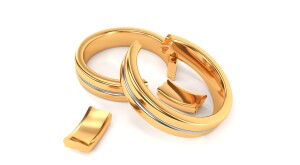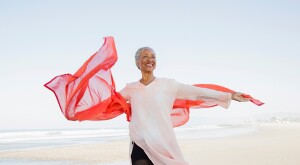Sis, you want your bottom half to look good, right? Yeah, I know. We all do. Well, fortunately, the almighty lunge exists.
“Lunges are a great exercise because they are a compound movement that helps strengthen the overall lower body, [and] can improve stability and balance and prevent injuries to other parts of the body,” says Flo Elkins, a certified personal trainer and owner of F.L.O. Life Fitness in Los Angeles.
Just in case you’re not aware (or need a refresher), here’s how to perform a basic forward lunge.
Stand with your feet about hip-width apart and your arms at your sides or hands on your hips. Keeping your torso upright, take a big step forward with one leg. Lower down until your front thigh is about parallel to the floor and your rear knee is just above the floor. Push off the same foot (front leg) to return to the starting position. Repeat with the other leg.
Got it? Good!
Of course, get your doctor’s OK before beginning any new exercise regimen.Here’s why lunges deserve a spot in your workout routine.
- They will do wonders for your butt and thighs. Lunges strengthen the muscles of your lower body, including your quadriceps, hamstrings, glutes and abdominals.
- They can help you look tight and trim. You must focus on nutrition along with your workouts to drop weight, of course. But still, because lunges strengthen the core and glutes, they improve your posture, which can make you look slimmer because you’re more upright, Elkins says.
- They build muscle mass. As we get older, we lose muscle mass. Strength training exercises, like lunges, help maintain and build muscle mass. You want as much muscle mass as possible to keep down your body fat, stay active and prevent injuries as you age.
- Lunges are a functional exercise. That means they’ll help make everyday movements like walking, picking up an object and stair-climbing easier, Elkins says.
- You’ll improve your balance and stability. Since they’re a unilateral exercise (you work one side of the body at a time), lunges require core stability and help improve your balance and coordination, according to Elkins.
Before you start, some safety tips:
- Use a chair for balance if necessary.
- Don’t let your knee travel past the front of your toe.
- Keep your knee in line with your foot. Don’t let it roll inward or outward.
- Don’t let your torso lean forward or backward.
- Allow your muscles time to recover by taking a rest day between exercising each muscle group. For example, if you do leg day on Monday and include lunges and squats, make Tuesday an upper-body workout day. Return to legs on Wednesday.
Elkins recommends starting with one to two sets of 10 lunges per leg and then moving up to three sets of 12 when you’re able.
In addition to the forward lunge, try these variations:
- Reverse lunges. Instead of stepping forward, step back with one leg and lower into the lunge. Return to the starting position and then repeat with the opposite leg. If you have knee problems, Elkins says reverse lunges may be better, because some people experience knee pain doing forward lunges but not with reverse lunges.
- Walking lunges. Lunge forward with one leg. Then, instead of returning to the starting position, lunge forward with the opposite leg. Keep alternating legs so you’re “walking.”
- Side lunges. Stand with your feet about shoulder-width apart. Place your hands on your hips or clasp them together in front of your chest. Take a wide step out to the left, keeping both feet facing forward. Bend your left knee and push your hips back and down so your weight sits mostly on your left side. Return to standing. Repeat and then switch legs.
- Curtsy lunges. Start with your feet shoulder-width apart. Step one leg back diagonally behind your other leg. Slowly lower your body down into a curtsy. Rise out of the lunge. Repeat. Then do the same with the other leg.
- Weighted lunges. As you get stronger, Elkins recommends adding weights to any of the lunge variations because it helps build muscle. Try dumbbells, a kettlebell or a medicine ball. If you don’t have any of those, canned goods, a gallon of water or even a bottle of laundry detergent can add some resistance.











